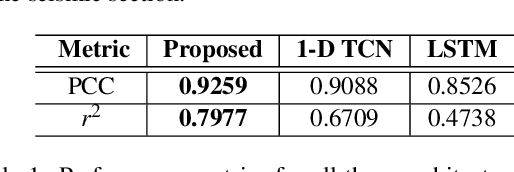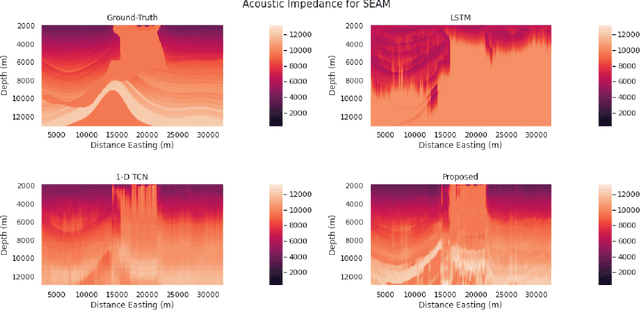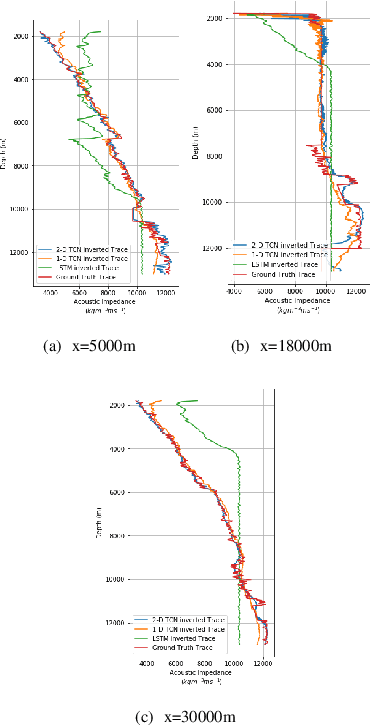Spatiotemporal Modeling of Seismic Images for Acoustic Impedance Estimation
Paper and Code
Jun 28, 2020



Seismic inversion refers to the process of estimating reservoir rock properties from seismic reflection data. Conventional and machine learning-based inversion workflows usually work in a trace-by-trace fashion on seismic data, utilizing little to no information from the spatial structure of seismic images. We propose a deep learning-based seismic inversion workflow that models each seismic trace not only temporally but also spatially. This utilizes information-relatedness in seismic traces in depth and spatial directions to make efficient rock property estimations. We empirically compare our proposed workflow with some other sequence modeling-based neural networks that model seismic data only temporally. Our results on the SEAM dataset demonstrate that, compared to the other architectures used in the study, the proposed workflow is able to achieve the best performance, with an average $r^{2}$ coefficient of 79.77\%.
 Add to Chrome
Add to Chrome Add to Firefox
Add to Firefox Add to Edge
Add to Edge